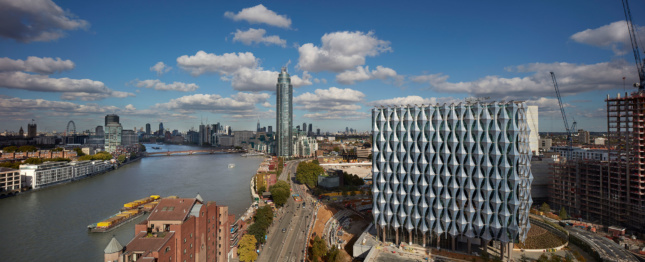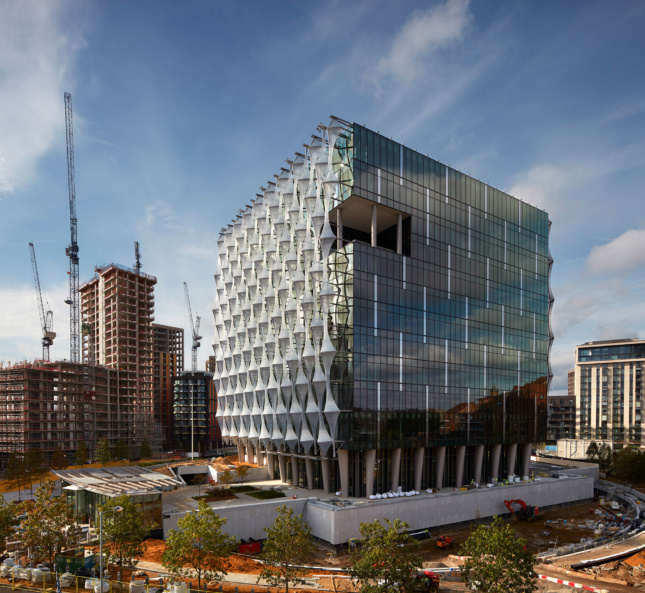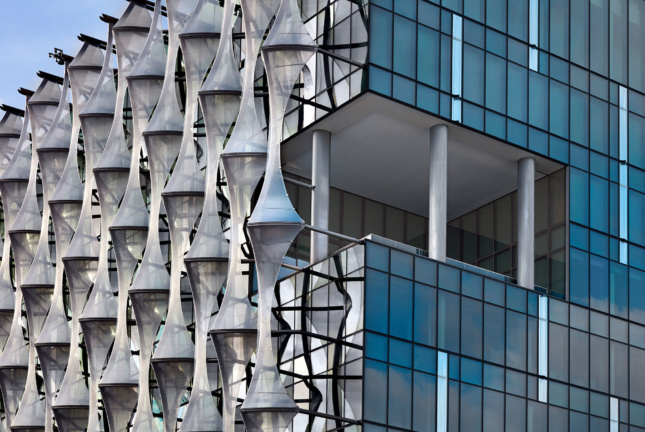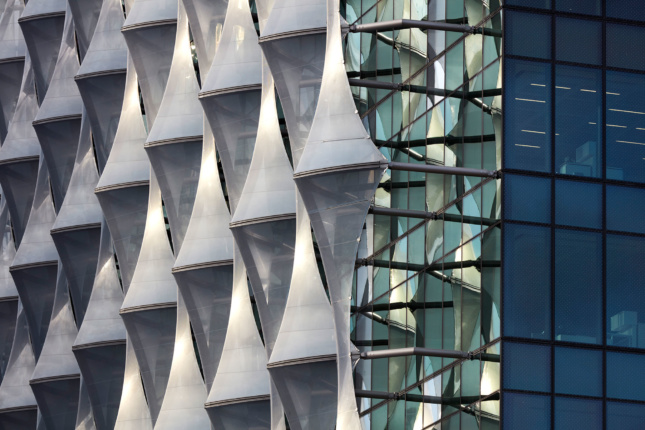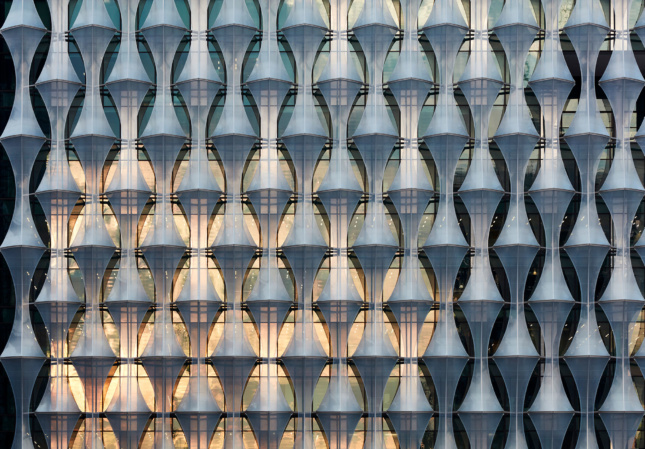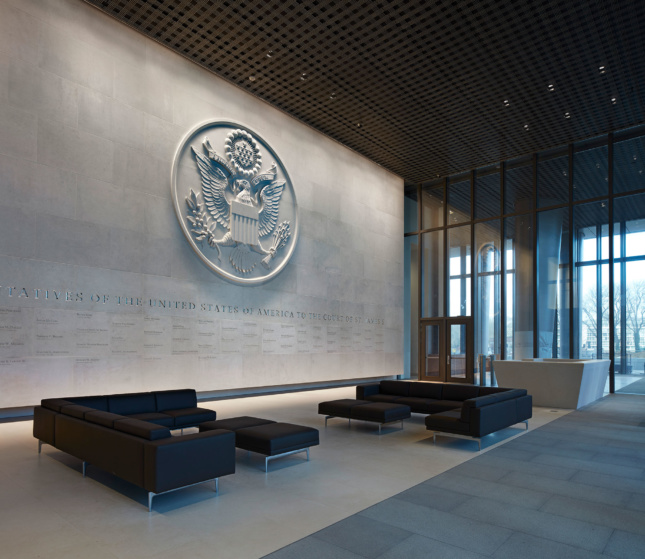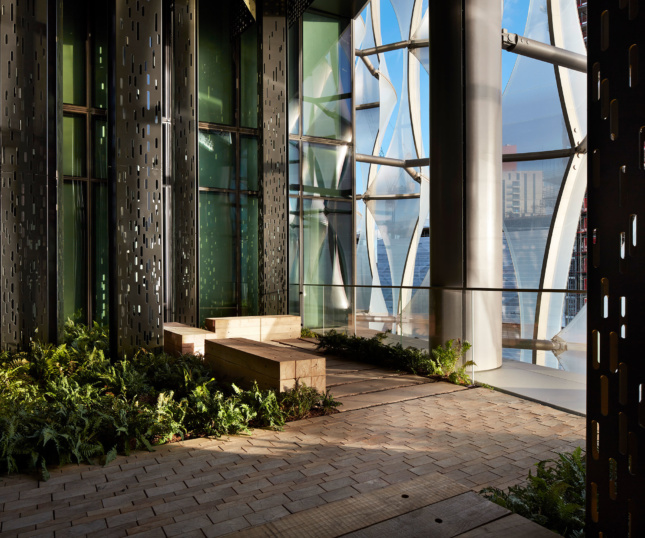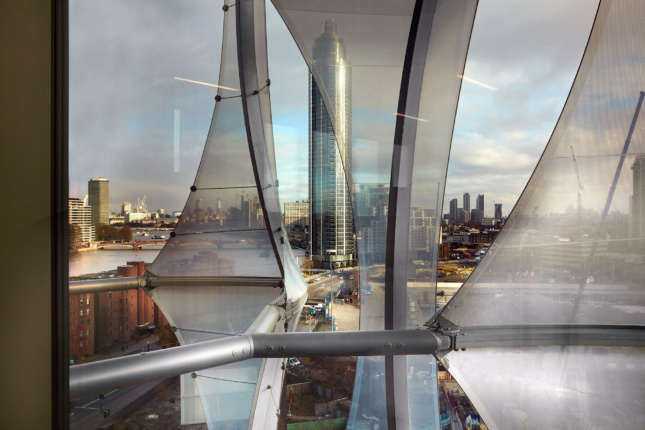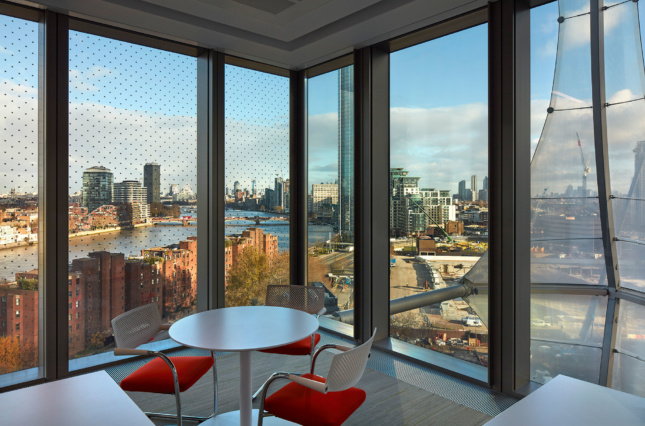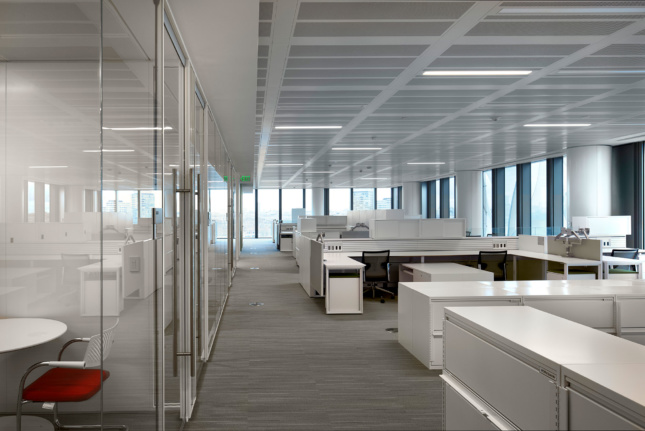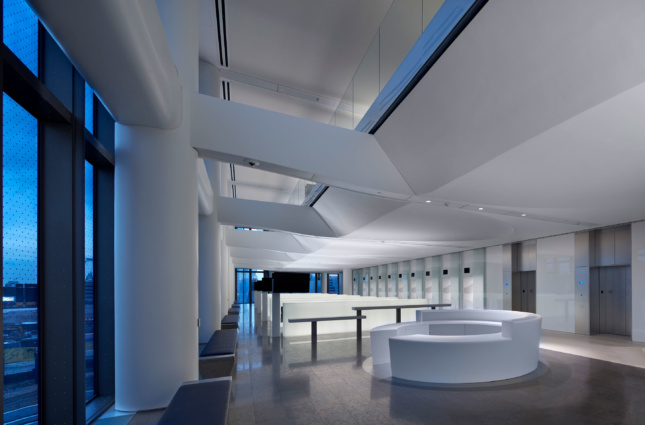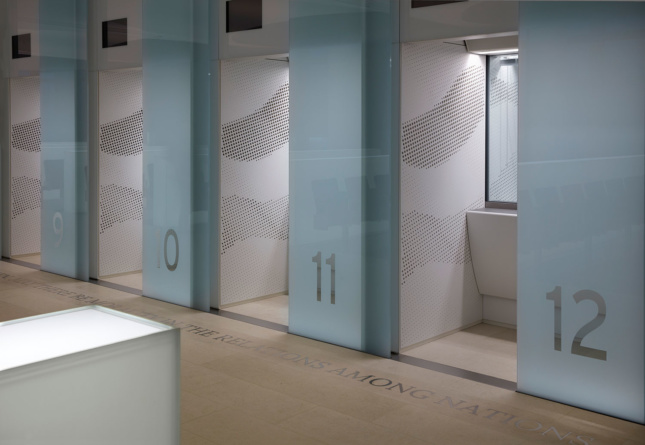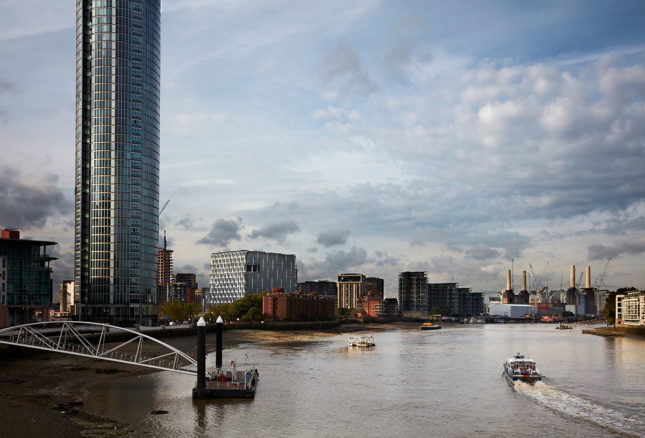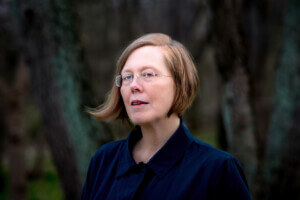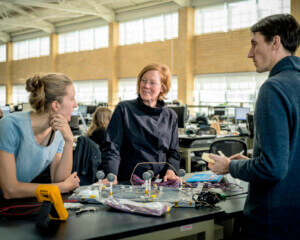Marking its first project on U.K. shores, KieranTimberlake Architects’ U.S. Embassy in South London is finally complete. The Philadelphia firm was the winner of a competition launched by the American Embassy in London in 2008. Now the Embassy’s new location in Nine Elms, just off the banks of the River Thames, will open a decade later this January. An official opening date is still pending, as the status of President Donald Trump’s inaugural state visit hangs in the balance due to a concern about widespread protests.
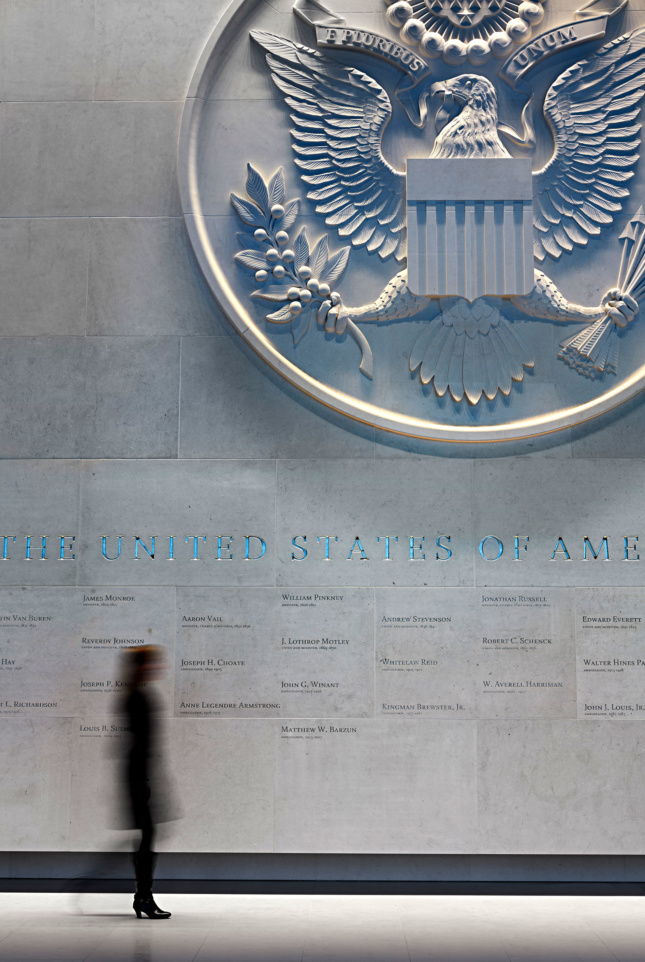
Indeed, worries about security dominate the current U.S. Embassy in London, particularly after spate of attacks on other American consulates. Nestled in a Georgian enclave in Mayfair, the current Embassy, Eero Saarinen’s Grade II Listed structure from the 1950s, is unceremoniously fenced off. Despite a crowning aluminum bald eagle, the wealth of bollards that precede the fencing means the embassy’s current locale is decidedly lacking in freedom.
After surveying 40 possible locations, the U.S Embassy is moving to an even safer compound, one it can truly control. The architects didn’t have a say in curtailing this aspect; a prescribed 100-foot “seclusion zone” meant the embassy’s relationship to the site was never going to be an open one.
However, some efforts have been made to make the notion of security less explicit. A bioswale in the form of a semi-circular pond (essentially half a moat), fortified hedges, and a gabion wall have all been sunk below ground level to make the embassy seem less stand-offish from afar.
From this distance, KieranTimberlake’s work stands out as a crystalline cube from its brick-clad neighbors. On three sides of the 213-foot-tall structure are ethylene tetrafluoroethylene (ETFE) sails which act as a shading device. James Timberlake, a partner at the architecture firm, stressed the need to “filter all that enters,” listing “people, air, and even materials.” Birds too are kept out through star-spangled fritting found on the northern-facing façade, the only side free from the ETFE sails.

But if the outside dazzles, which it almost does at night, the embassy’s interiors are severely lacking. For those who can’t get or see in, you’re not missing out. Although Ambassador Woody Johnson pushed the idea that his embassy’s architecture was “outward-looking,” evidence of this is hard to come by.
Inside, it becomes apparent that the sails block fantastic views out onto the river from the east and west sides of the building. As if a brief which stipulated such high levels of security wasn’t enough to strangle the life out of the building, striving for LEED Platinum status through the enormous shading sails has shot the architects in the foot.
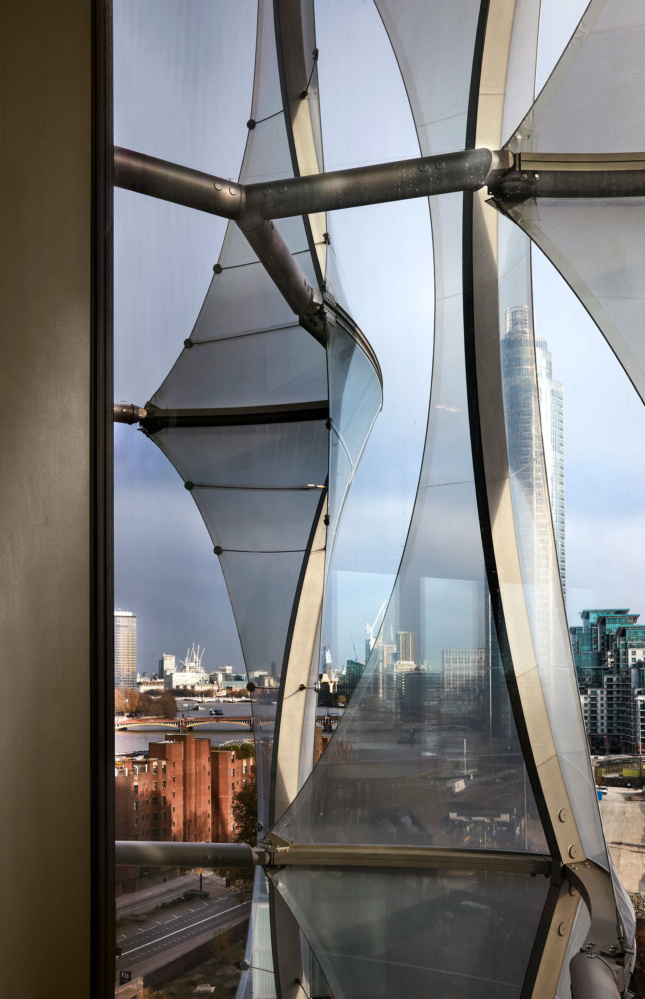
Perhaps because it is now on Brexit-bound soil, there is further evidence of insularity at a granular scale as well. The embassy, to the annoyance of at least one employee, is filled only with U.S. plug sockets “bar a few Brit outlets.”
Besides a serene visa waiting hall and the ground floor lobbies, one of which features work from British artist Rachel Whiteread, the other Gensler-designed interior levels shown to journalists are remarkably boring. Interior gardens and garden balconies offer a sorry attempt at adding American charm. Their inclusion results in the embassy feeling more like a high-security Holiday Inn.
This anodyne, ultra-safe approach seems to have leaked into the building’s surroundings as well. A nauseatingly large amount of generic apartment blocks surrounds the embassy. They fall under the umbrella of “New London Vernacular,” a term that arose during Boris Johnson’s mayoralty to encourage historically sensitive design. Though most of the area is still under construction, what’s built so far already hints at the non-place that the $20-billion Vauxhall Nine Elms Battersea Opportunity Area (VNEB), of which the embassy is a part, is set to become.
In this bland context, the consulate’s isolationism as expressed in its distinctive facade may, in fact, be its best quality. One thing the embassy wasn’t fearful of though, was spending big. At $1 billion, it is the most expensive embassy in the world. You have to wonder, where did all that money go?






